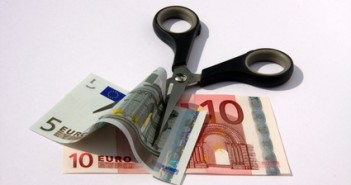The first euro-zone rate decision under the new ECB president Mario Draghi comes at a bad timing of a slowdown in the zones’ economies. There’s a significant chance that Draghi will reverse the last rate hike of his predecessor. ECB Preview.
Jean-Claude Trichet held the helm for 8 years and proved to be very tough with the interest rate. In July 2011, Trichet raised the rate for the second time since the 2008 financial crisis erupted to 1.50%, in a decision that was heavily criticized. Draghi will likely take one step backwards.
The main reason for the rate hikes was the rise in inflation. This inflation was mostly pumped through rising prices of oil, as well as other commodities – external supply. Trichet tried to address demand.
Many reasons for cutting the rates
 Demand in mot euro-zone countries weakened during the second quarter of 2011 and continued to Q3 and also into October. The German economy grew by only 0.1% in Q2 and the French economy stalled. Overall growth only 0.2%.
Demand in mot euro-zone countries weakened during the second quarter of 2011 and continued to Q3 and also into October. The German economy grew by only 0.1% in Q2 and the French economy stalled. Overall growth only 0.2%.
More recent figures point to an upcoming recession: purchasing managers’ indices for the zone are below 50, and falling. This means a squeeze in activity. Business confidence, consumer confidence and other indicators are falling.
The most troubled countries in Europe are enduring an extra pain due to high rates which curb lending in an already hostile economic environment.
So, a rate cut of 0.25% can definitely spur growth and is much needed, although it will be a bit too little and too late.
3 reasons for a mild 0.25% cut
- The ECB doesn’t run: The ECB takes its time and doesn’t make hasty moves, to say the least. It moves painfully slowly on the rates.
- Inflation is still high: Recent figures still point to a rise of above 2% in the headline CPI – above target. Core CPI is much lower, but the ECB focuses only on headline inflation – “a single needle in the compass”.
- Draghi is Italian: Italy is known for loose monetary policy – low rates which promote growth and also inflation. In his first week on the job, Draghi will not want to live up to this stigma but rather place himself in line with the ECB’s tough mentality that favors a fierce fight against inflation.
A rate cut is mostly priced in, but this isn’t 100% certain. So, the actual decision will still be closely watched. And also the words of Draghi at the press conference will be of high importance.
Press conference:
- If the ECB’s forecasts will be gloomy, and more rate cuts will be on the cards, the euro has a potential of falling quite a bit.
- Balanced message: Draghi can also hint that this move is sufficient for the time being and that no new cuts are likely soon. In such a case, the euro has a potential of running higher.
- Optimistic message: Expressing hope is quite unlikely. If Draghi opts to be extra tough, countering the rate cut, the euro might rise at first, but isn’t likely to buy such promises.
In the unlikely event of a 50bp rate cut, the euro is naturally set to fall. And also if rates remain unchanged, an option which cannot be ruled out, this has a damaging effect on the economy and a rally is unlikely.
For more on EUR/USD, see the euro/dollar forecast.
